MV Agusta is known for some of their very beautiful and super limited special edition models in the past and their latest 2020 MV Agusta Dragster 800 RR collaborates with one of the world’s most exclusive online retail concepts, TheArsenale. (more…)
MV Agusta is known for some of their very beautiful and super limited special edition models in the past and their latest 2020 MV Agusta Dragster 800 RR collaborates with one of the world’s most exclusive online retail concepts, TheArsenale. (more…)
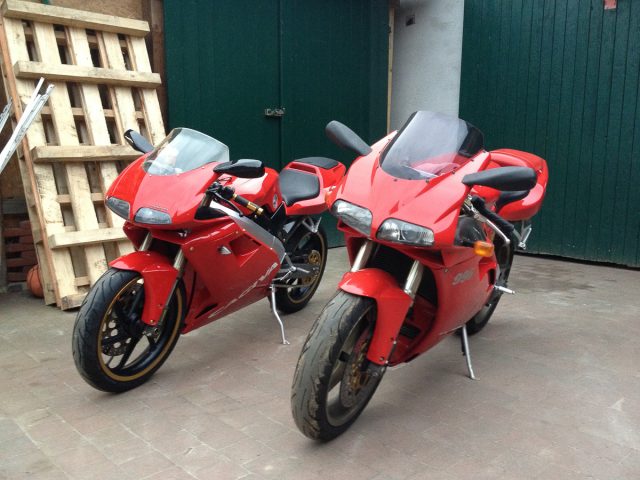
Jenama motosikal yang pernah terkenal pada suatu ketika, Cagiva, akan kembali semula dengan memperkenalkan beberapa jentera baharu.
Bagaimanapun, Cagiva akan dilahirkan semula sebagai syarikat motosikal elektrik seperti yang dilaporkan electrek.co.
Ditubuhkan pada 1978, Cagiva menempah nama selaku pengeluar motosikal Itali yang popular namun beberapa kali melalui penstrukturan semula sebelum menjadi anak syarikat milik MV Agusta.
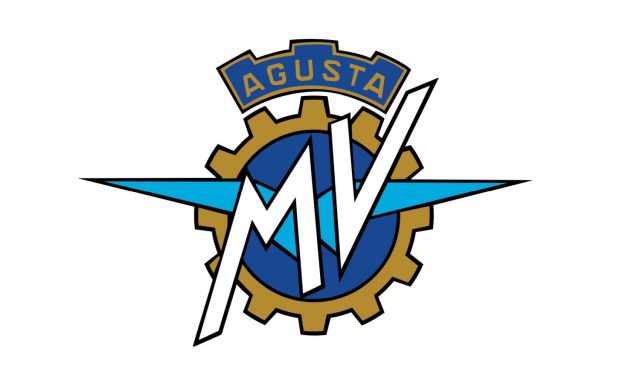
Tahun 2012 merupakan tahun akhir Cagiva menghasilkan model baharu.
Sementara itu, MV Agusta sendiri turut bergelut dengan masalah kewangan namun kembali stabil dibawah pimpinan Presiden Timur Sardarov.
Tatkala masa depan MV Agusta tampak positif, mereka kini bercadang untuk melibatkan diri dalam penghasilan motosikal elektrik dan berniat menghidupakan jenama Cagiva sebagai pelopor utama syarikat dalam arena itu.
Difahamkan, Cagiva akan memperkenalkan jentera elektrik baharu dalam tempoh 12 bulan akan datang.
Baru-baru ini, Sardarov mendedahkan pihaknya akan menjalinkan kerjasama dengan syarikat berpangkalan di China, Loncin, dalam menghasilkan jentera MV Agusta 350cc.
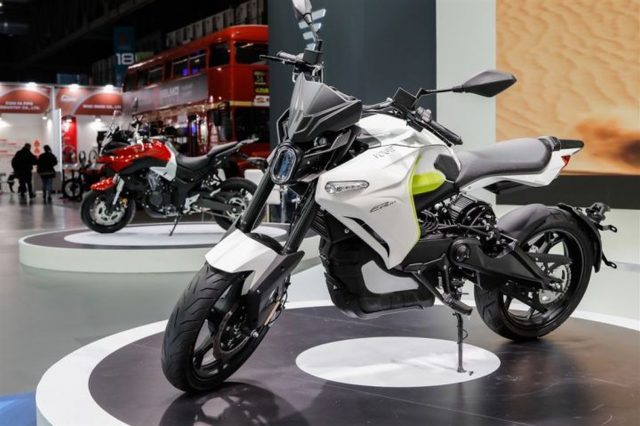
Pada masa sama, Loncin turut memperkenalkan sebuah jentera elektrik, VOGE ER 10 yang diperkenalkan kepada umum di EICMA 2019.
Mungkin kerjasama ini sedikit sebanyak akan menyumbang kepada penghasilan jentera elektrik oleh Cagiva? Kongsikan pendapat anda.
(SUMBER: electrek.co)

Presiden MV Agusta, Timur Sardarov mendedahkan bahawa pihaknya akan menghasilkan jentera bersesaran 350cc.
Meletakkan sasaran penjualan 25,000 unit motosikal dalam tempoh lima tahun menerusi penjualan jentera 350cc, MV Agusta turut akan memperkenalkan jentera 950cc dan sebuah motosikal jenis adventure (ADV).
Susulan penstrukturan semula pada 2018, Sardarov memberi jaminan untuk menyuntik dana sendiri untuk memperkembangkan barisan model MV Augusta dengan memasuki segmen baharu.
Meskipu membawa nama besar dan premium namun disebabkan pergelutan pengeluaran jenama Itali itu gagal menghadirkan pulangan yang positif.
Dua tahun lalu, MV Agusta hanya merekodkan 3,500 unit penjualan.
Bagi memenuhi permintaan pasaran di samping bersaing dengan jenama lain, MV Agusta telah menjalinkan kerjasama dengan syarikat berpangkalan di China, Loncin.
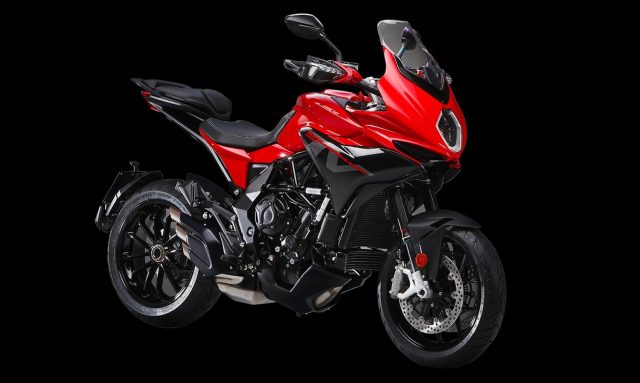
Kerjasama ini akan menyaksikan penghasilkan enjin bersesaran 350cc.
Menggunakan kerjasama di antara Bajaj-KTM sebagai contoh, Sardarov menegaskan MV Agusta tetap memiliki 100 peratus pengawalan.
“Kerjasama kami dengan Loncin sama seperti KTM-Bajaj dan BMW-TVS.
“Kami sedar pasaran 350cc amat besar tetapi ketika ini segmen ini tidak menawarkan keterujaan sebaliknya hanya penjimatan. Kami mahu menghasilkan jentera yang cantik dengan kejuruteraan MV tetapi dihasilkan di Asia,” jelasnya.
Pada masa sama, Sardarov turut menegakan Loncin hanya membekalkan enjin sepertimana yang mereka lakukan terhadap BMW bagi model F 750 GS dan 850 GS serta skuter C 400 X dan 400 GT.
More and more custom bikes are popping up from all around the world but very few have the guts and budget to work on something that’s already considered by many as ‘premium’ or ‘exotic’. In the case of Tricana Motorcycles (Switzerland), they are one of the few and the result is this; the MV Agusta La Rouge. (more…)
It looks like the folks from MV Agusta will be diving into the 350cc motorcycle category, hopefully in the next couple of years. The manufacturer will still stand as a premium exotic brand but plans to extend its offerings to a bigger market with the introduction of smaller capacity bikes below 500cc. (more…)
When it comes to the world of motorcycle Grand Prix racing, the biggest legend of them all has to be none other than the great Giacomo Agostini. With a grand record of 15 world championship title, 123 Grand Prix victories, 18 Italian championship titles, and 10 TT wins, you’ll need a complete museum tour guide to go through his massive wins racked up over the years. (more…)
MV Agusta is nothing if not for their radical bikes, but the 2020 MV Agusta Rush 1000 is an extreme.
The manufacturer says that it’s a tribute to the drag racing scene. But without an elongated swingarm and lowered body stance, it’s more of a streetfighter. Even then, it looks like its stylists were given the free hand to go bonkers.
The Rush 1000 is based on the Brutal 1000RR but MV gave specialist exhaust makers SC Project the task of producing a unique system. Instead of being routed out the side, the dual tips exit behind the frame and just above the rear tyre.
Fitted with the pipes, the engine liberates 209 bhp and 116 Nm of torque, placing it well in the hypernaked category. In fact, it is the most powerful against the 208 bhp Ducati Streetfighter V4 and 197 bhp Kawasaki Z H2.
There’s plenty of carbon fibre to bring its weight down to 185 kg, dry. That disc-like rear wheel cover is carbon, hiding a forged-aluminium wheel.
Front brakes are Brembo Stylema 4-piston calipers gripping 320 mm discs. Öhlins electronic suspension is rightfully fitted.
No price yet, but it’s definitely going to be expensive. We wonder if MV Agusta will make a more “regular” version to challenge the Streetfighter V4.
Cagiva. A name as hallowed in motorcycling as is storied. The brand’s history had so plot changes that it’ll turn viewers’ brains inside out if it was made into a movie.
They were even owned by our Malaysian automaker Proton at one time. Hey, wait a minute there! Wasn’t that MV Agusta? Yes, it was MV Agusta but it was also Cagiva. We can see question marks popping up everywhere around your heads now.
And where is Cagiva now?
Okay, okay, we’ll spare you the torture, and here we go (along with a pot of industrial-strength coffee).
The name “Cagiva” was actually derived from the founder’s name and the location of the factory: CAstiglioni GIovanni from VArese, Italy. It’s a norm among Italian companies and certainly among automotive companies there. For example, the later Bimota was an amalgam of BIanchi, MOrri and TAmburini.
Anyway, the company began in 1950 as a producer of small metal components.
The company was purchased by the sons of Giovanni in 1978 and they began producing motorcycles when they purchased the AMF-Harley-Davidson/Aermacchi factory, also in Varese. Thus the eight 125cc to 350cc two-stroke bikes were rebadged as Cagivas. Sales hit 40,000 units in 1979.
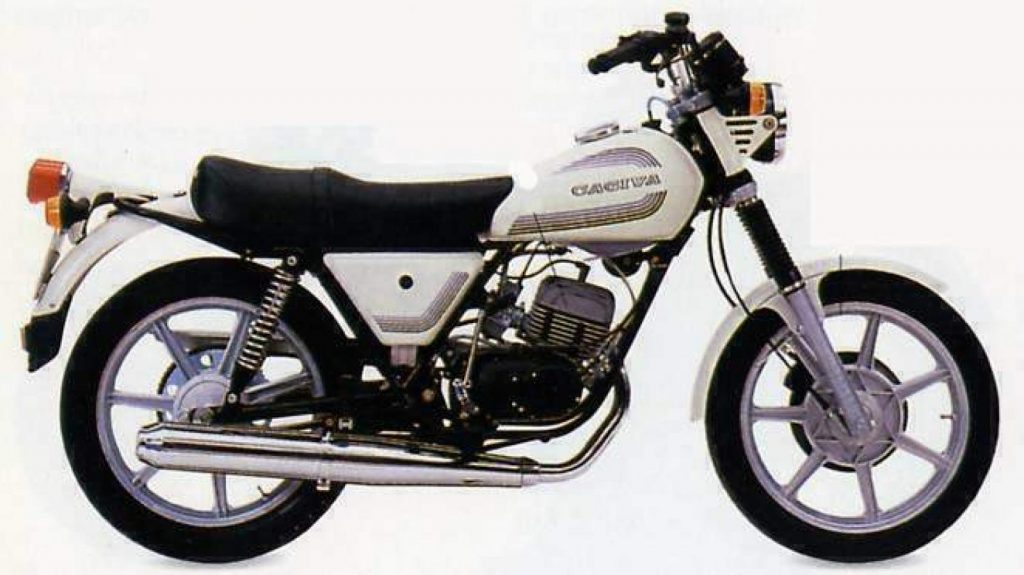
By 1983, they began using 350cc and 1000cc four-stroke Ducati engines.
Cagiva became one of the strongest companies at the time, which saw then grow to a conglomerate, like how KTM is today (which is probably like the Microsoft in motorcycling).
You see, Italy produced and still produces the most beautiful motorcycles that usually did well in racing, but the manufacturers inadvertently got mired in financial troubles, and ended up either bought out or folded up. Not so with Cagiva.
Within seven years of producing motorcycles, they bought the Ducati brand in 1985. The company decided that Cagiva and Ducati motorcycles were produced side-by-side since the latter’s name is more well-known outside of Italy.
The Group also purchased Moto Morini in 1985, followed by Husqvarna in 1987 and trademarks to MV Agusta in 1991.
The 1980’s was a heady time for the manufacturer.
They had produced dirt bikes and there began a massive campaign in North America to promote them. Their bikes were powerful and featured a number of innovations ahead of their time. Most notable among them were forks that was for preload in one leg while another controlled the damping. It’s only now we see “separate function forks” being popularised.
Armed with those weapons, Pekka Vehkonen and David Strijbos won the World MX 125cc titles back-to-back in 1985 and 1986. The company also secured the 125cc contractor’s title in 1987.
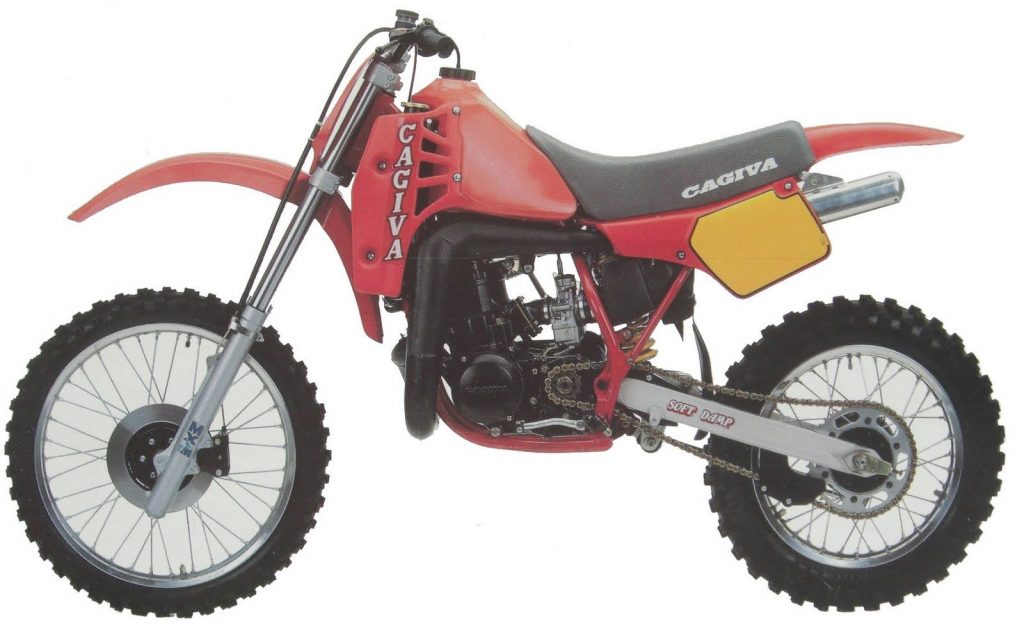
It was during this time that the factory made their forays into 500cc Grand Prix racing, employing Randy Mamola from 1988 to 1990. He achieved one podium finish. Eddie Lawson joined in 1991 and won the 1992 Hungarian GP. John Kocinski was the last addition in 1992, and rode the ever beautiful C594 to third overall in 1994.
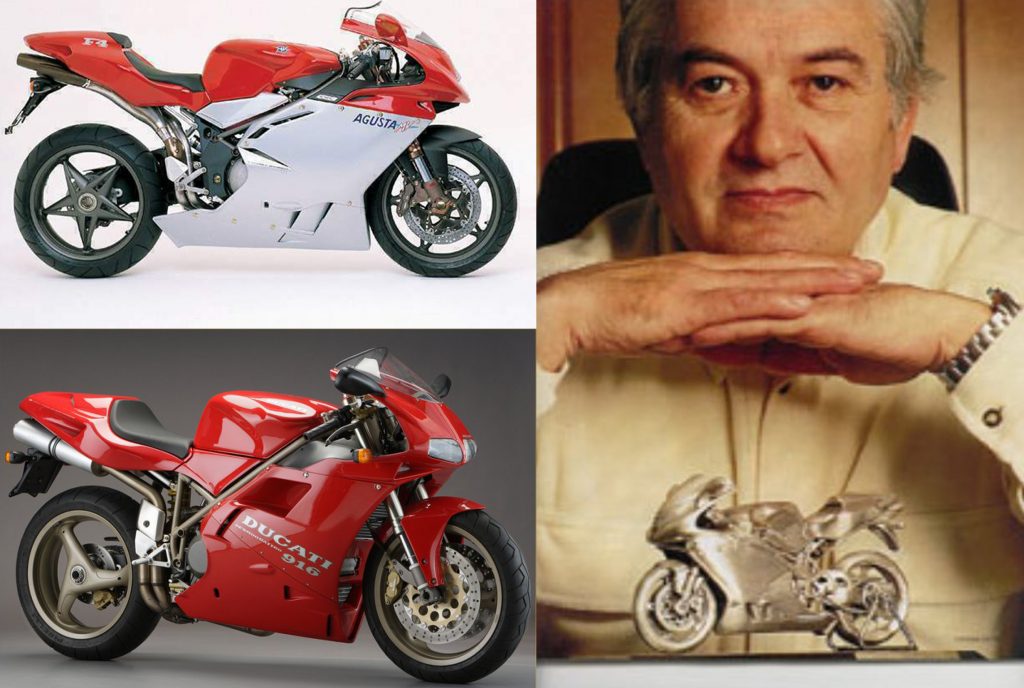
It was also in 1985 that the most important motorcycle designer joined the Cagiva Group. His name was Massimo Tamburini.
Tamburini was one of the founders of Bimota. As with most designers in Italy, they are also engineers. But Tamburini was a hands-on guy as well, often welding the frames he developed at Bimota.
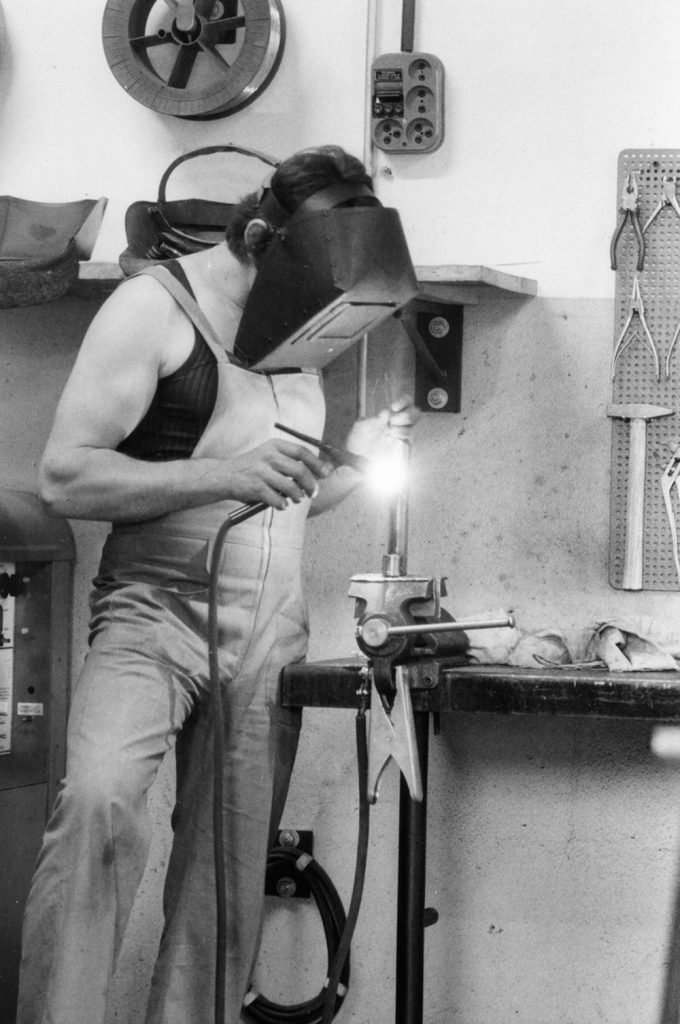
He wasted no time and produced the Ducati Paso 750 in 1986. It may look ungainly (some likened it to a pregnant whale) with its fully-enclosing bodywork, but it went on to inspire other bikes which cemented Ducati’s name: The 851 and 888 superbikes, plus the 900 SuperSport/SS road bike.
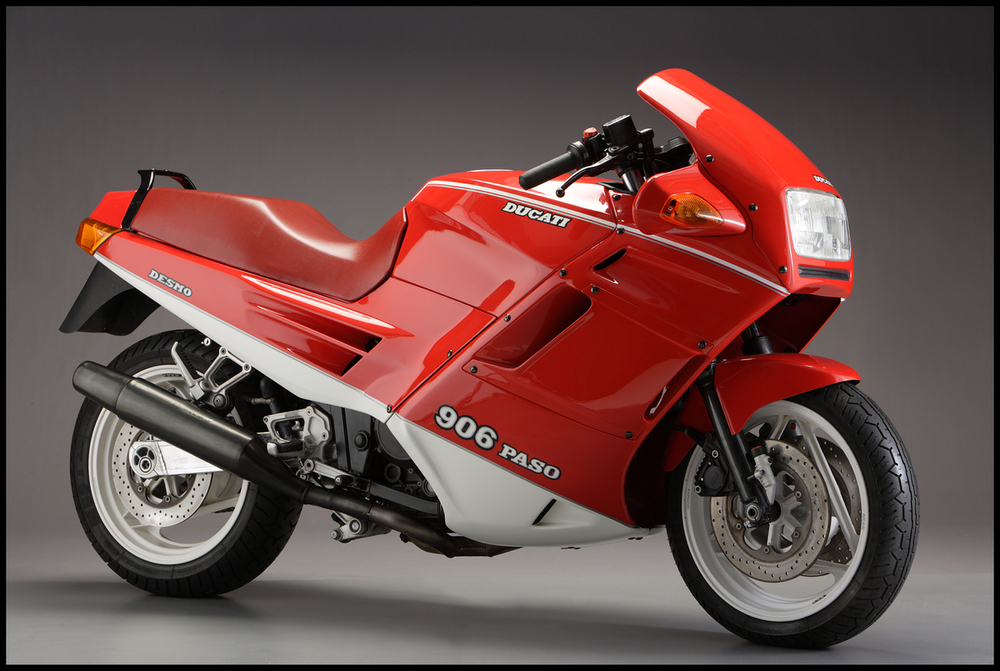
The company set up the Cagiva Research Centre (CRC) in 1987, which Tamburini headed. This was why period Ducatis had CRC badges. There were also other well-known designers at CRC including Pierre Terblanche and Miguel Angel Galluzzi who joined in 1989.
1989 saw the birth of the first Mito. This zippy 125cc sportbike became the favourite of teens everywhere including one young Valentino Rossi. The model went through a number of iterations and became the main challenger to the Aprilia 125 Futura and then the RS125, albeit not on the tracks.
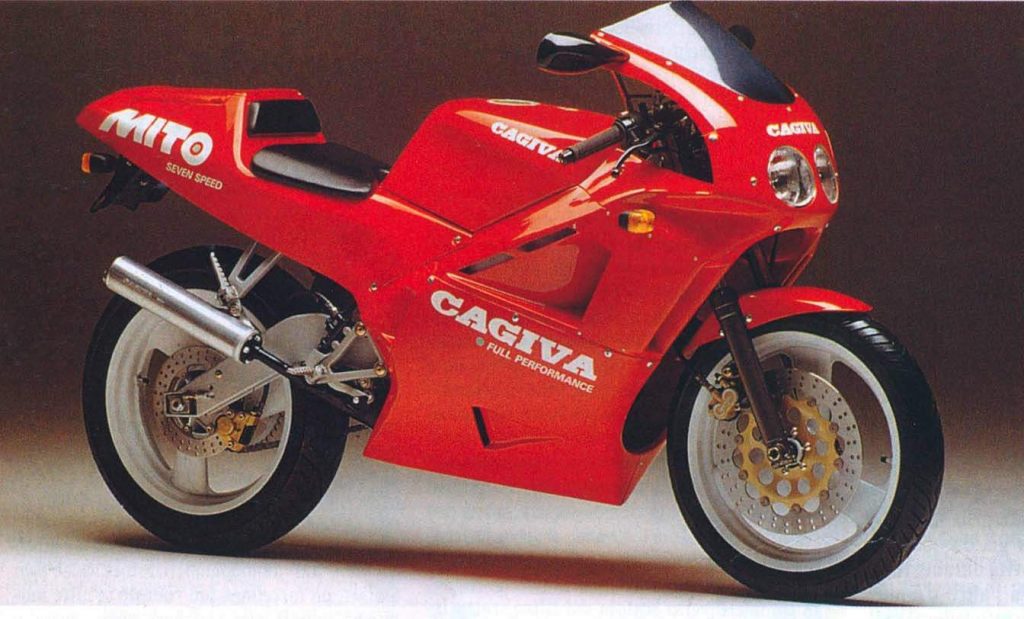
Cagiva kept a strong presence in the offload racing scene, contesting in the Paris-Dakar Rally. They were rewarded with a win by Edi Orioli on the Cagiva Elefant in 1990. The pairing would repeat the feat in 1994. The Elefant used a Ducati 90cc air-cooled V-Twin shared with the 900SS.
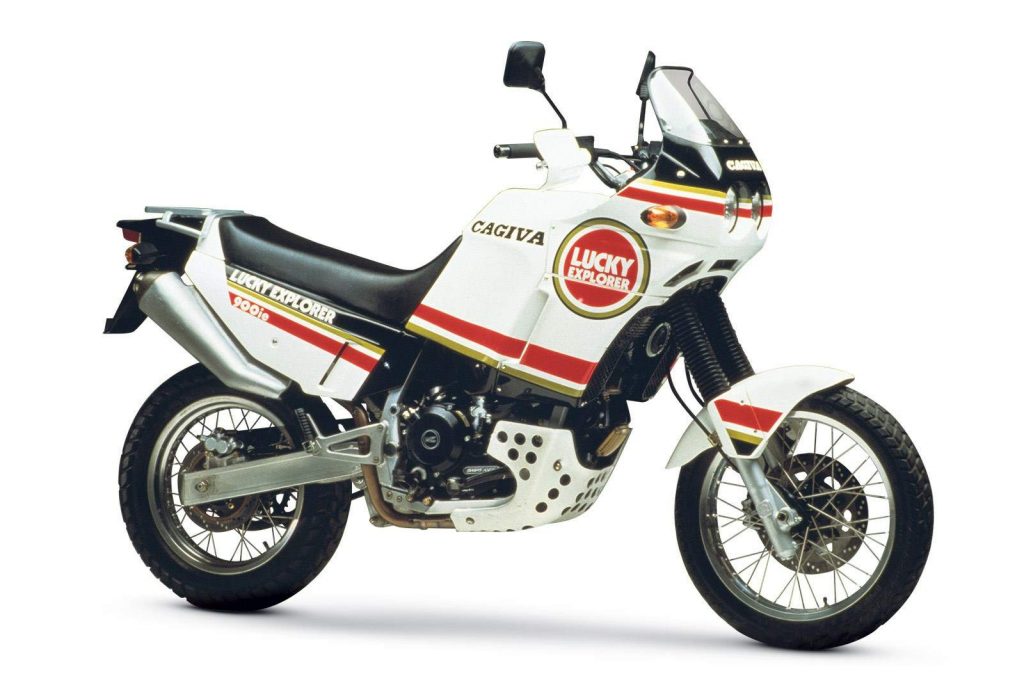
But the real domination period began when…… drum roll, please…. Ta-da! the Ducati 916 was unveiled in 1993 (for MY1994). The entire world went ga-ga, bananas and everything else in between! One journalist wrote that people only remembered the 916 in 1993/94 but couldn’t recall what else came out that year . The 916 would spawn the 748 a year later.
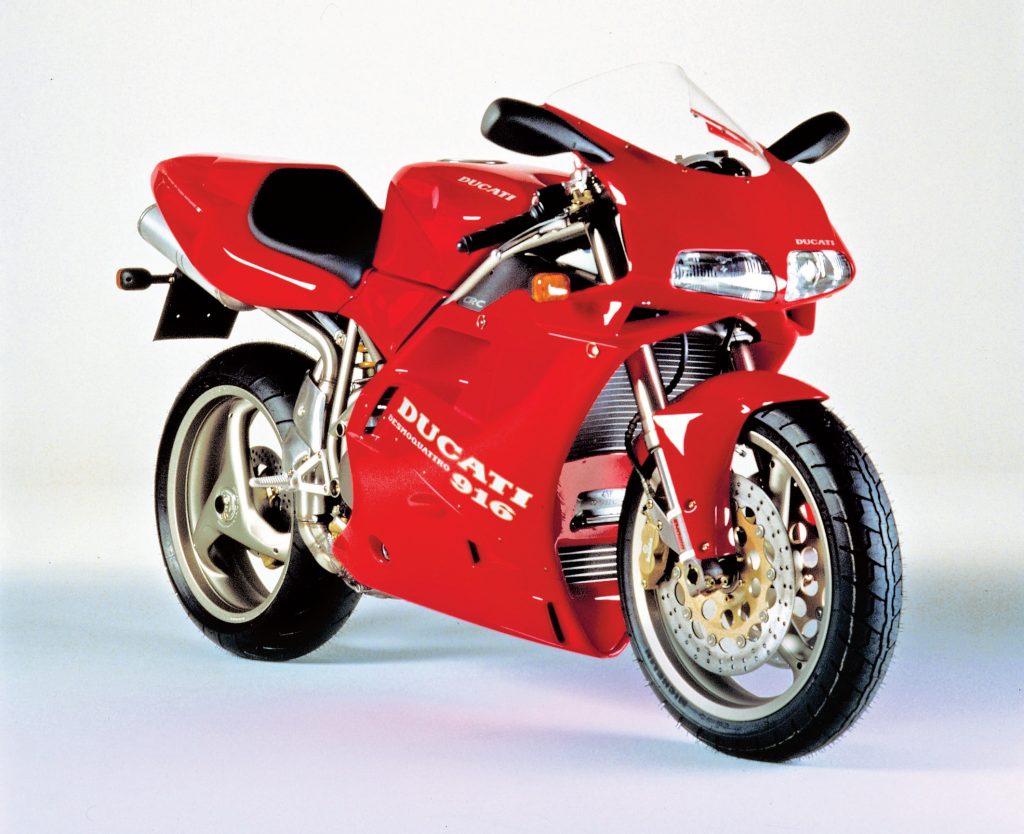
While the 851 gave Ducati their first World Superbike title and was followed with two more by the 888, the 916 hit the tracks and dominated in the hands of a tempestuous and now-legendary rider, Carl Fogarty.
At the same time, Galluzzi designed the M900 which the factory’s test riders nickname “Il Monstro” (The Monster) due to its hooligan-inducing behaviour. It was thus known as the Ducati Monster henceforth.
But it seems that history has a knack for irony. While Ducati was kicking butts and taking names on the racetrack with the 916 and its later derivatives, they soon found themselves in financial trouble.
Sure, everyone had wanted a 916 but it was too expensive, hence the job of saving Ducati’s name fell to the Monster.
But it still wasn’t enough and soon, equity fund manager Texas Pacific Group Capital (TPG) bought 51% of Ducati’s shares from Cagiva.
While the 916 continued its form on the racetracks, Cagiva began to focus more on the MV Agusta brand. Cagiva finally sold the remainder of Ducati’s shares to TPG in 1996 and concentrated on MV Agusta. They also offloaded Moto Morini.
And in 1999, they released the show-stopping MV Agusta F4 Serie Oro (Gold Series), designed by none other than Massimo Tamburini.
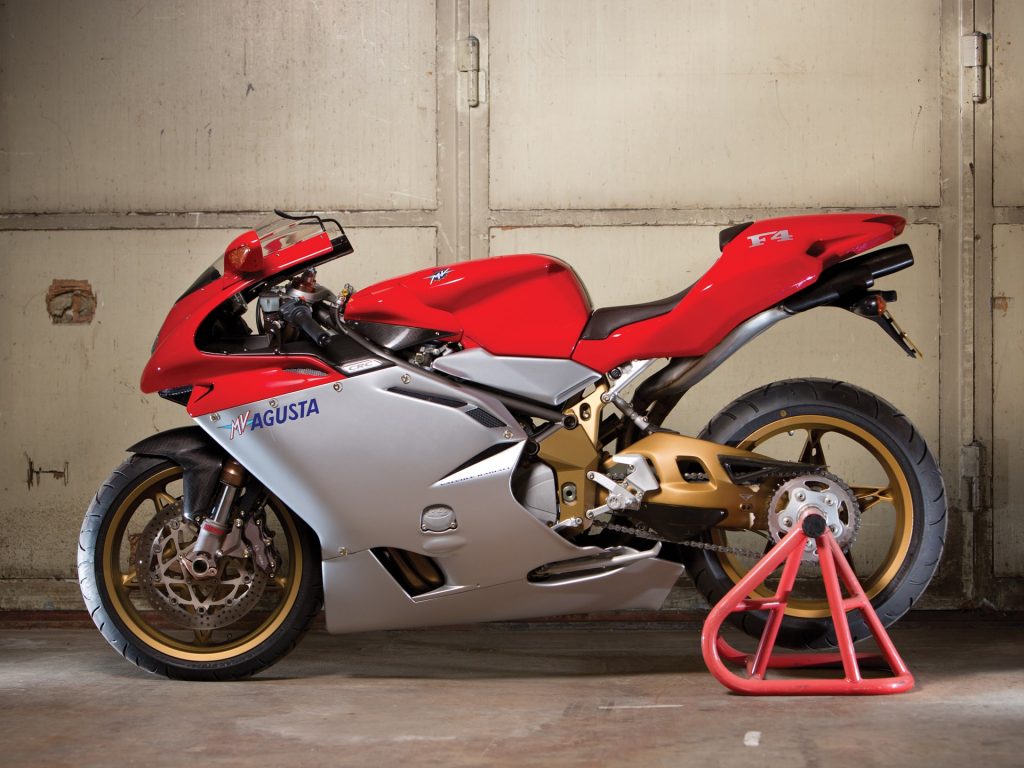
Since then, only the MV Agusta name was often used and the company itself went through many acquisitions, reselling and reacquisitions.
First, it was purchased by PETRONAS/Proton in 2004. But just a year later, Proton decided to let the brand go. Proton Chairman at the time Datuk Mohammed Azlan Hashim said that keeping MV Agusta would bankrupt the Proton. The company was sold it to the investment group GEVI for a token € 1.00 (excluding accumulated debts).
GEVI restructured the company and sold Husqvarna to BMW.
Harley-Davidson bought MV Agusta from GEVI in 2008 before being bought back in 2009 by Claudio Castiglioni.
But the Cagiva name lived on, contrary to popular belief, in the Mito which went on to the final model in 2012.
Fast forward to 2014, Mercedes-Benz purchased a 25% stake in the brand and marketed the bikes under the AMG banner, no doubt as to rival Ducati who are now owned by Lamborghini under Audi AG, which is itself under the VW Group.
But by 2016, the company was again in trouble which included a € 40 million debt while Mercedes absolutely refused to inject more capital into the venture. As such, Giovanni Castiglioni decided to buy back the shares but could not obtain the funds. The production line had stopped and there was no spare part for their customers. In view of this, the company filed for a temporary order to protect itself from creditors while attempting to look for investors.
Thankfully, the Black Ocean Group headed by Timur Sardarov (no “John Wick” jokes please, just sayin’) stepped in with the much-needed capital in 2016.
Since then, MV Agusta has grown from strength to strength and have just announced another round of investments recently. The company knows that only a select few could afford premium motorcycles hence tying up with the Loncin Motorcycle Company in China to produce bikes between 350cc to 500cc for the Asian market.
So there you go. While the Cagiva name is no more, MV Agusta is still Cagiva. And the other way around.
Great new for the storied MV Agusta brand as it announced the securing of funding for the next five years.
The funding allows the oft-tumultuous brand to continue developing bikes into the near future. A new business plan is according drawn up and sees the manufacturer targeting an annual sales goal of 25,000 motorcycles next year.
They will continue to concentrate on premium motorcycles, but will add mid-sized bikes. The firm tied up with Loncin Motor Company in China recently to produce four motorcycles between 350cc to 500cc.
The plan also calls for “strong” investment in MV Agusta’s global distribution and service network over the next two years, focusing on the United States, Europe and Asia.
Following the news is also the announcement of a revision in the MV Agusta management line-up.
Giovanni Castiglioni will be moved to the role of an advisor after steadfastly holding on to the company’s helm for a number of decades. Timur Sardarov had taken over as Chairman of the Board and CEO in December 2018, since the funding comes from his family. He will be joined by Massimo Bordi and Paolo Bettin.
Massimo Bordi’s name should be no stranger to many. He was the father of the four-valve, liquid-cooled V-Twin engine for Ducati. It was he who challenged the convention put forth by Fabio Taglioni such an arrangement couldn’t be made.
Bordi will assume the role of Executive Vice Chairman. He had served as General Manager for MV Agusta and Cagiva during Claudio Castlglioni’s (Giovanni’s father) tenure.
On the other hand, Betting will be the new Chief Financial Officer.
Goh Brothers is now holding the role of official aftersales provider for MV Agusta in Malaysia. Will this plan also see them expanding to sales?
MV Agusta is known for their super premium line-up of powerful bikes and some very well-known special edition models. Their latest endeavour involves a one-of-a-kind MV Agusta F3 800 painted in the colours of UNICEF to show their support for children worldwide. (more…)
MV Agusta partners with the Loncin Motor Company to launch a four-model lineup, ranging between 350cc to 500cc. The bikes will be designed in Italy and built in China,and expected to hit dealer showrooms by 2021.
The partnership will go further than small capacity bikes. MV’s Castiglioni Research Centre (CRC) will design 800cc bikes for Loncin’s high-end brand called Voge.
Partnerships of Western and Chinese manufacturers are becoming the norm lately, but it’s still a bit of a surprise to learn that MV Agusta is doing so, too. The move is surprising because MV Agusta has always been the – if not one of – Italy’s premium motorcycle manufacturers. We can probably hear current owners screaming sacrilegio (sacrilege) or infamia (infamy).
But think about this: Some Chinese manufacturers unabashedly knock off the designs of famous motorcycles, then build them with the quality of rice paper. We’ve seen copies of BMWs, Ducatis, even the Honda Gold Wing!
Suing the manufacturers who copy the designs take long periods of time and cost lots of money. For example, the case of Lambretta versus a Chinese manufacturer who copied the former’s bikes. Even then, Chinese makers seem to be immune from such intellectual property laws in their country.
Therefore, it may be easier for Western makers to join forces with their Chinese counterparts.
© Copyright – BikesRepublic.com 2024 Trademarks belong to their respective owners. All rights reserved